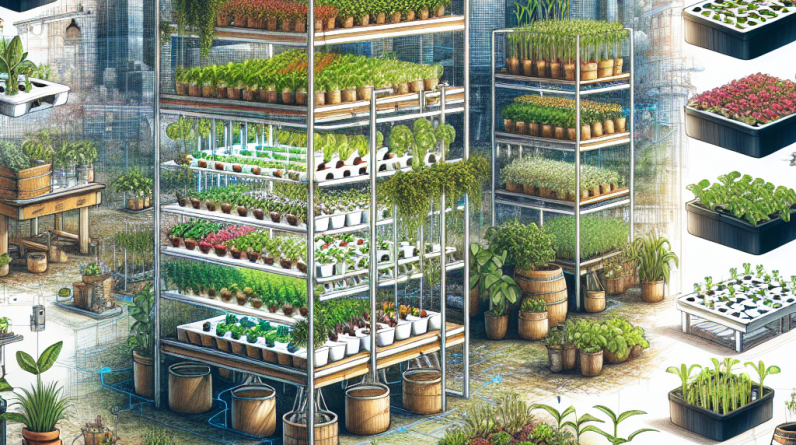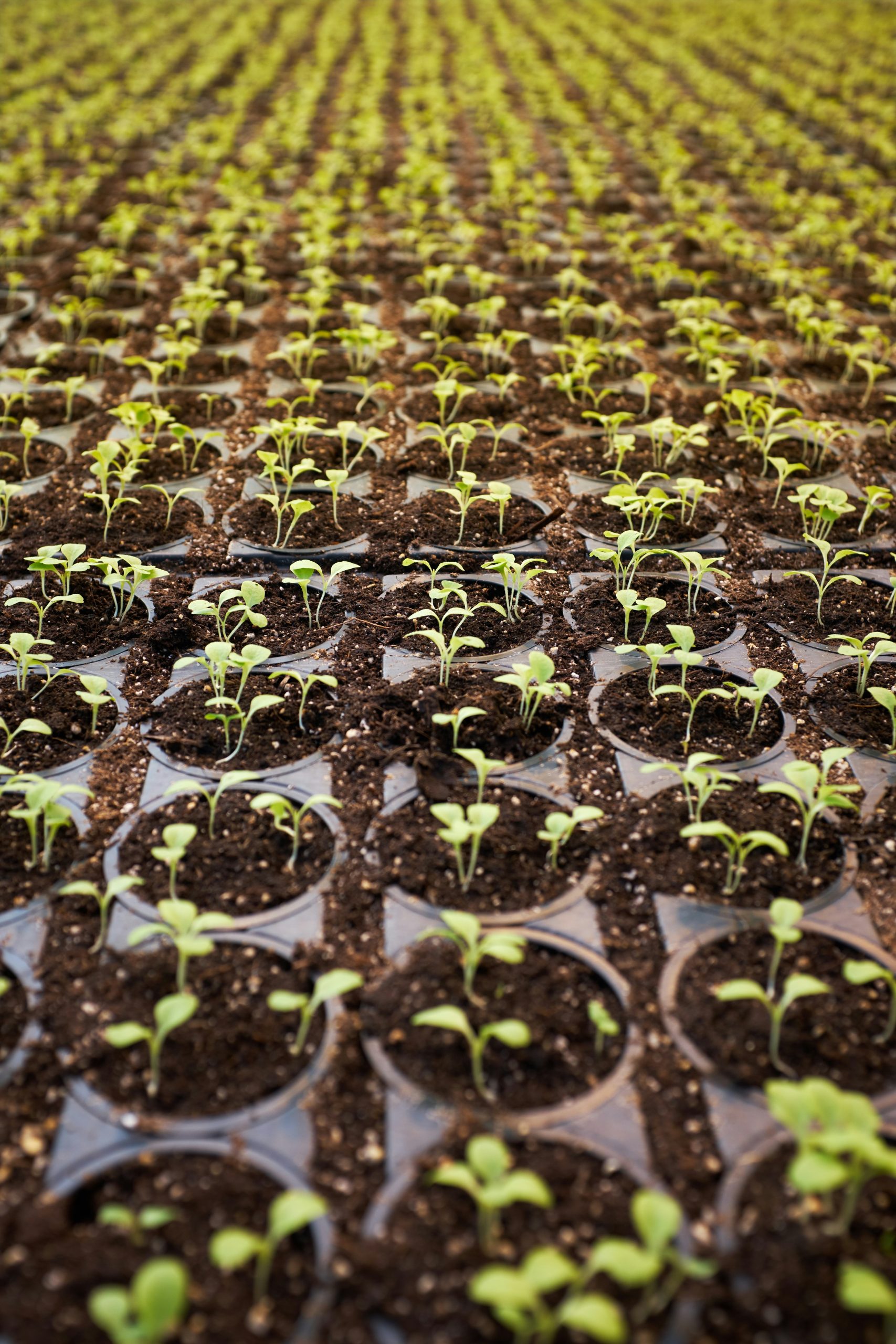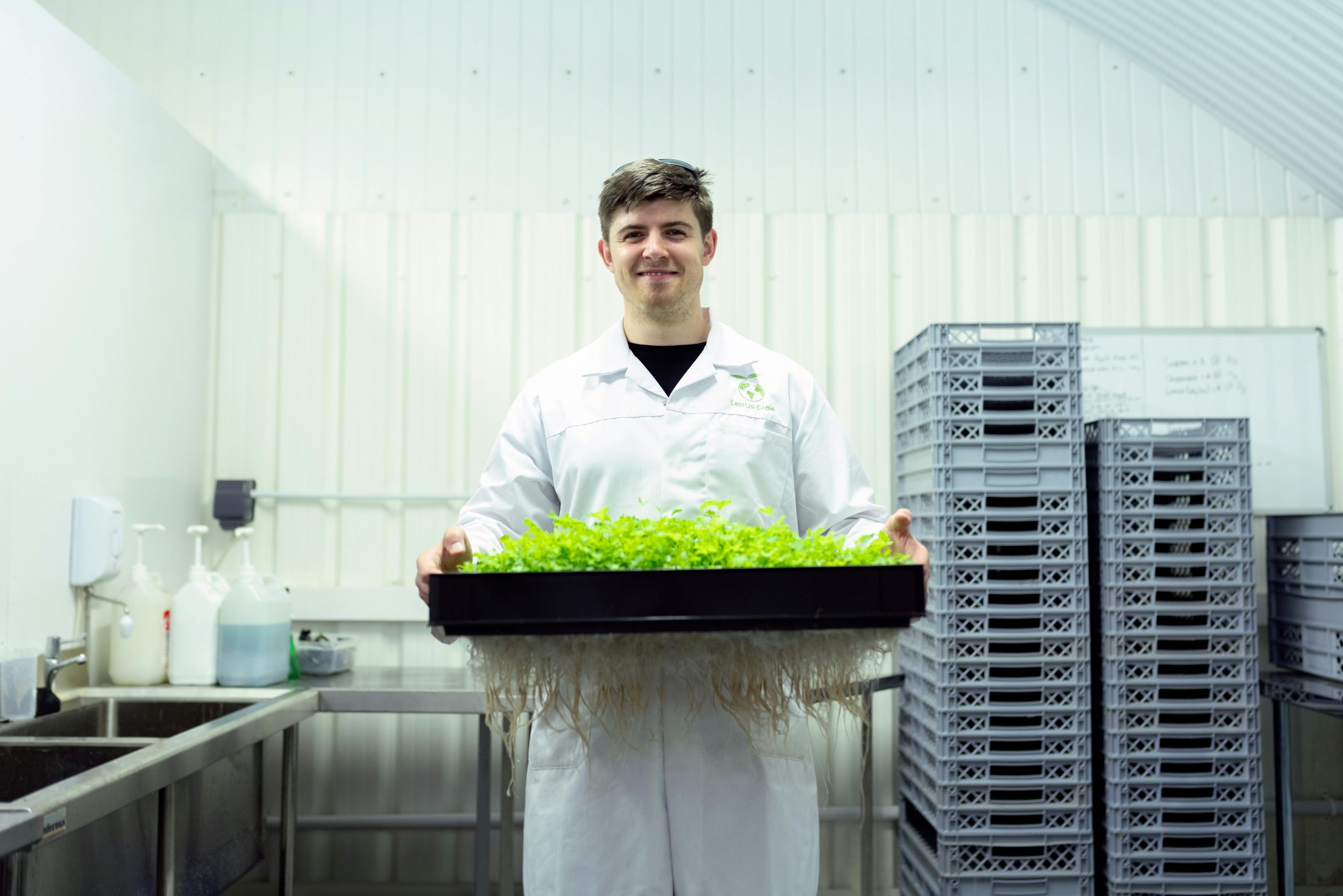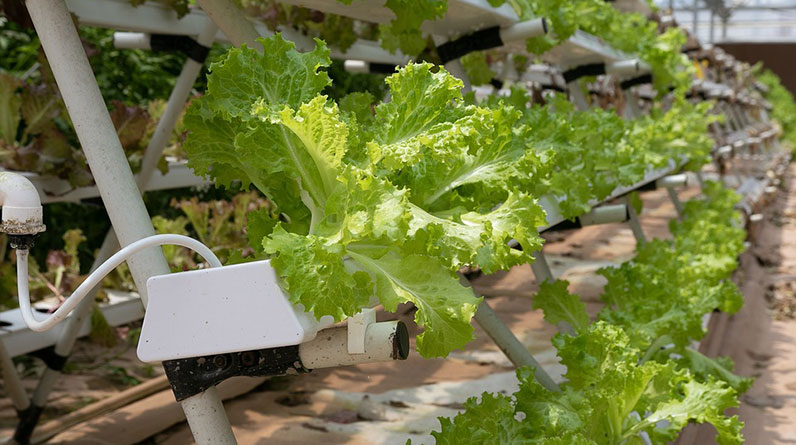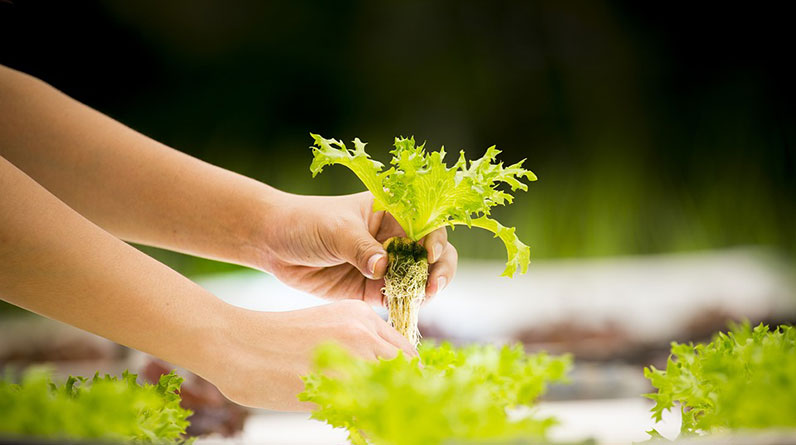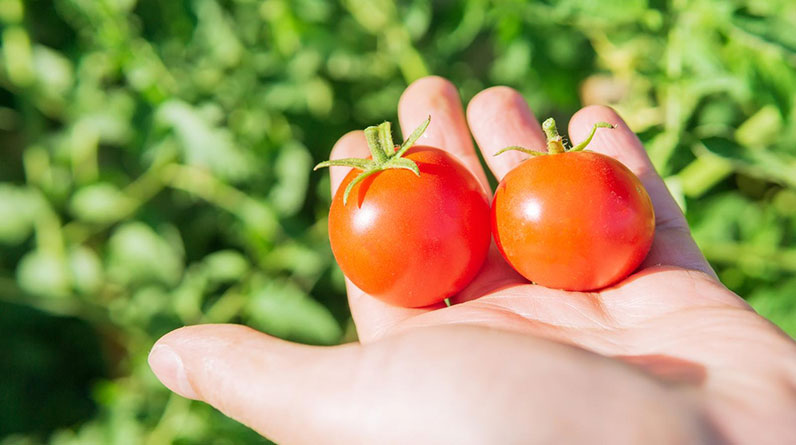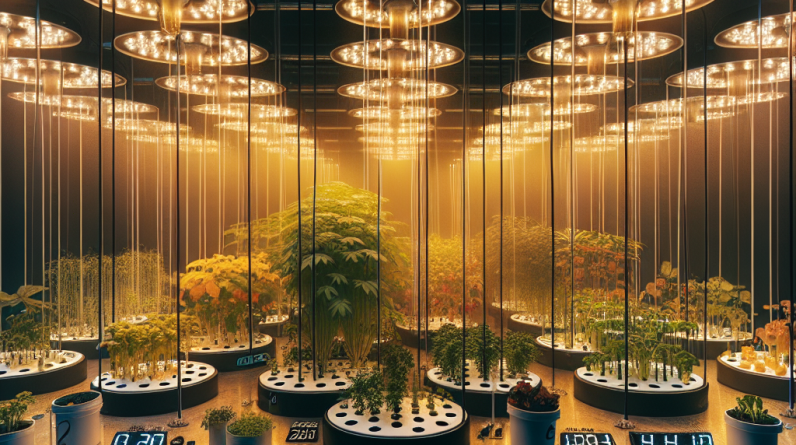
1. Choose the Right Spectrum of Hydroponic Grow Lights
Understanding Light Spectrum for Plant Growth
When selecting hydroponic grow lights, the spectrum of light they emit plays a crucial role in plant development. Full-spectrum lights that mimic natural sunlight are generally ideal, providing a balance of blue, red, and other wavelengths. In 2025, many growers are opting for LED lights with adjustable spectrum settings to fine-tune lighting based on specific plant needs.
Blue light (around 450-495 nm) encourages vegetative growth, such as leaves and stems, while red light (around 620-750 nm) promotes flowering and fruiting phases. By selecting hydroponic grow lights that allow for spectrum customization, growers can optimize plant health and yield throughout each stage.
Research indicates that tailored light spectra can increase plant growth rates by up to 20%, making this an essential strategy for 2025 growers aiming for maximum productivity.
Practical Tips for Spectrum Selection
Choose hydroponic grow lights with adjustable spectrum controls so you can optimize light for your specific crops. For leafy greens, emphasize blue light in the vegetative stage, then switch to red or full-spectrum during flowering. This flexibility allows for better control and healthier plants.
Also, consider LED lights that offer different settings for dawn, dusk, and even cloudy conditions, helping you mimic natural sunlight patterns indoors. Investing in versatile lighting systems provides long-term savings and improved crop results.
Make sure to check reviews and specifications to confirm your hydroponic grow lights provide consistent spectrum quality to ensure your plants thrive in 2025.
2. Optimize Light Intensity and Duration
Determining the Correct Light Intensity
Achieving the right light intensity is vital for healthy plant growth. Too little light can stunt growth, while too much can cause stress or damage. In 2025, technology advances have enabled more precise control over light intensity through dimmable LEDs and light sensors.
For most hydroponic crops, maintaining a light intensity of 200-400 µmol/m²/s during the vegetative stage and increasing to 400-600 µmol/m²/s during flowering yields optimal results. Use PAR meters to measure and adjust your grow lights accordingly.
By fine-tuning intensity, you conserve energy and promote efficient growth without unnecessary costs or stress on your plants.
Managing Light Duration and Photoperiods
Proper light duration, or photoperiod, influences plant cycles. Most indoor growers follow a schedule of 16-18 hours of light during vegetative growth and 12 hours during flowering. Automated timers and smart controls in 2025 make managing these cycles straightforward.
Consistent light schedules mimic natural conditions and prevent stunted growth. Additionally, adjusting light duration based on plant response â like leaf coloration or flowering â can enhance yields.
Layered with spectrum control, optimizing both intensity and duration creates a resilient environment for hydroponic plants to flourish.
3. Utilize Vertical Farming Techniques
Maximizing Space with Vertical Hydroponic Gardens
Vertical farming maximizes space efficiency, especially in urban settings or limited areas. Hydroponic systems equipped with adjustable hydroponic grow lights allow plants to grow upward, increasing yield per square foot significantly.
Using tiered lighting arrays, growers can ensure each plant receives uniform light exposure. LED fixtures designed for vertical setups are energy-efficient and produce minimal heat, preventing heat stress.
By employing vertical strategies paired with hydroponic grow lights, you create scalable systems that adapt to your growing needs in 2025.
Benefits of Vertical Hydroponic Grow Lights
Vertical setups with well-placed hydroponic grow lights reduce shadowing effects, ensuring even light distribution. This uniformity results in healthier plants and better overall yields.
Moreover, vertical farming minimizes resource waste â water, energy, and nutrients â making your operation more sustainable. It can also improve airflow around plants, reducing disease risks.
In 2025, integrating vertical farming with smart lighting controls is a top trend for maximizing hydroponic crop outputs.
4. Incorporate Timers and Automated Controls
The Power of Automation in Hydroponic Lighting
Automation is transforming how we manage hydroponic grow lights. Timers, coupled with smart controllers, enable precise scheduling to match your plants’ growth needs. This reduces manual labor and ensures consistency.
Modern systems in 2025 integrate with IoT devices, allowing real-time adjustments based on environmental data like light levels, temperature, and humidity. This creates an optimal and stable environment for your plants.
Automation also helps with energy savings â turning lights off during peak daylight hours or adjusting intensity automatically during cloudy days.
Practical Tips for Setting Up Automated Systems
Start with programmable timers connected to your hydroponic grow lights. Then, explore smart control systems that adjust lighting based on plant development stages or external weather forecasts. Many brands now offer apps for remote management.
Regularly monitor system performance and tweak settings to prevent over- or under-lighting. Automation reduces errors and creates a reliable framework for your hydroponic garden in 2025.
Investing in automation pays off through increased yields and reduced operational costs.
5. Regularly Maintain and Clean Your Hydroponic Grow Lights
Why Maintenance Matters for Hydroponic Grow Lights
Dirty or malfunctioning hydroponic grow lights can significantly reduce their efficiency. In 2025, maintenance routines are essential to ensure consistent light output and prevent the buildup of dust, mold, or algae.
Routine cleaning of reflectors, lenses, and light covers not only extends the lifespan of your equipment but also maintains optimal light intensity and spectrum quality. A simple wipe-down every few weeks can make a big difference.
Failure to maintain your lights can lead to uneven plant growth and potential crop losses. Scheduled inspections are a must for serious hydroponic growers.
Best Practices for Cleaning and Maintenance
Disconnect your hydroponic grow lights before cleaning. Use gentle, non-abrasive cleaning solutions suitable for LED surfaces. Avoid harsh chemicals that could damage the bulbs or reflectors.
Check for any signs of wear or damage periodically, and replace faulty components immediately. Keeping a maintenance log helps you track when things need replacing or servicing.
Maintaining your hydroponic grow lights ensures your indoor farm stays productive and energy-efficient in 2025 and beyond.
6. Use Reflective Materials to Maximize Light Efficiency
Enhancing Light Distribution with Reflection
Reflective materials lining your grow space can significantly boost light efficiency. In 2025, high-quality reflectors like Mylar or specialized grow tent liners reflect up to 90% of light back onto plants, reducing energy waste.
Positioning hydroponic grow lights close to the reflective surfaces creates a more uniform light spread, minimizing shadowing and under-lit areas.
Smart placement and high-quality reflective materials enable your grow system to produce higher yields with less energy â a key benefit for budget-conscious farmers in 2025.
Practical Tips for Implementing Reflective Surfaces
Line your grow space with reflective materials, ensuring they are clean and free of tears. Focus on corners and under-leaves, as these areas often receive insufficient light.
Combine reflective surfaces with adjustable hydroponic grow lights to maximize output. Consider reflective wall coatings that can be easily cleaned and maintained over time.
This simple upgrade can improve light utilization efficiency and lead to healthier plant growth.
7. Coordinate Light Cycles with Plant Growth Stages
Matching Light Schedules to Development Phases
Different plant stages require specific light cycles. During vegetative growth, longer light periods (16-18 hours) promote leaf and stem development. As plants transition to flowering, reducing light to 12 hours helps trigger bloom processes.
In 2025, smart hydroponic grow lights can be programmed to automatically switch cycles, ensuring plants receive optimal light tailored to each phase.
This precise coordination accelerates growth and improves crop yields, making your hydroponic operation more efficient and productive.
Tips for Optimal Stage-Based Lighting
Create a detailed lighting schedule aligned with your crop’s growth stages. Use timers and smart controllers to automate changes seamlessly. Regularly observe plant responses and adjust timing as needed.
Document your lighting routines to track what works best for your specific plants. Over time, this data-driven approach helps refine your strategies for 2025 success.
Smart management of light cycles ensures your hydroponic plants develop robustly and reach optimal harvest times.
8. Invest in Energy-Efficient Lighting Technologies
LED Technology and Its Advantages
In 2025, LED hydroponic grow lights dominate the market due to their energy efficiency, long lifespan, and customizable spectra. Investing in quality LEDs reduces electricity costs by up to 50% compared to traditional lighting systems.
Additionally, modern LED systems generate less heat, reducing cooling expenses and enabling closer placement to plants. This increases light intensity without risking heat stress.
Choosing energy-efficient technology not only benefits your bottom line but also supports sustainable farming practices.
Cost-Benefit Analysis and Long-term Savings
Though initial investments may be higher, energy savings and reduced replacement costs make LED hydroponic grow lights cost-effective over time. Calculate your return on investment by considering energy bills, bulb longevity, and plant yields.
In 2025, many growers are opting for smart LEDs with adjustable spectra and dimming capabilities, further enhancing efficiency and crop quality.
Prioritizing energy-efficient lighting is a smart move for future-proofing your hydroponic operation.
9. Monitor and Adjust Lighting Based on Plant Feedback
Using Visual and Sensor Feedback
Regularly observe your plantsâ health indicatorsâleaf color, growth rate, and flowering success. Use sensors to monitor light intensity and environmental factors, making data-driven decisions on lighting adjustments.
In 2025, smart sensors integrated with IoT systems provide real-time feedback, allowing you to fine-tune hydroponic grow lights remotely.
This proactive approach prevents issues like light burn, stretch, or insufficient growth, ensuring your plants are always in optimal conditions.
Practical Approaches for Responsive Lighting
Implement weekly or bi-weekly plant health checks, and calibrate your lighting accordingly. Use apps or software that visualize sensor data, making it easier to spot trends and make timely adjustments.
Remember, plants can tell you a lot â yellowing leaves or stretching stems often indicate lighting issues. Listening to these signals helps you optimize your hydroponic grow lights in 2025.
10. Stay Updated on the Latest Hydroponic Lighting Trends
Keeping Abreast of Innovations
The hydroponic lighting industry is rapidly evolving. In 2025, new technologies like quantum dot LEDs and advanced spectral tuning are making headlines. Staying informed helps you adopt cutting-edge solutions for improved growth outcomes.
Follow industry leaders, attend trade shows, and join online communities to learn about emerging products and best practices. Investing in the latest hydroponic grow lights can give you a competitive edge.
Continuous learning ensures your indoor garden remains state-of-the-art and highly productive.
Practical Tips to Stay Informed
Subscribe to industry newsletters, participate in webinars, and read reputable gardening and hydroponic journals regularly. Test new lighting systems on a small scale before full implementation.
Collaborate with other growers and experts to exchange insights. This proactive approach ensures youâre ahead of the curve in 2025 and maintains a successful indoor hydroponic operation.
Conclusion
Implementing these 10 effective hydroponic grow lights strategies will position you for success in 2025. From choosing the right spectrum to adopting energy-efficient technologies, each tactic contributes to healthier plants, higher yields, and more sustainable practices. Remember, the key to thriving hydroponic gardening lies in consistent monitoring, smart automation, and staying up-to-date with industry innovations. By focusing on these strategies, your hydroponic grow lights will continue to play a vital role in your indoor garden’s prosperity throughout 2025 and beyond.
Frequently Asked Questions
- How do I select the best hydroponic grow lights for my plants?
- Consider the spectrum, intensity, energy efficiency, and adjustability of the hydroponic grow lights. Matching your plantsâ specific growth stages and light needs is essential for success in 2025.
- What are the benefits of using hydroponic grow lights?
- They enable year-round indoor cultivation, improve plant growth rates, increase yields, and reduce the use of pesticides and herbicides by creating optimal environmental conditions.
- How can I maximize energy efficiency with hydroponic grow lights?
- Invest in LED technology, use reflective surfaces, automate lighting schedules, and regularly maintain your equipment to reduce energy costs and extend lifespan.
- Why is spectrum control important for hydroponic grow lights?
- Spectrum control allows you to customize the light to meet specific growth stages, thereby promoting healthier plants and higher yields, especially critical in 2025’s advanced indoor farming setups.



